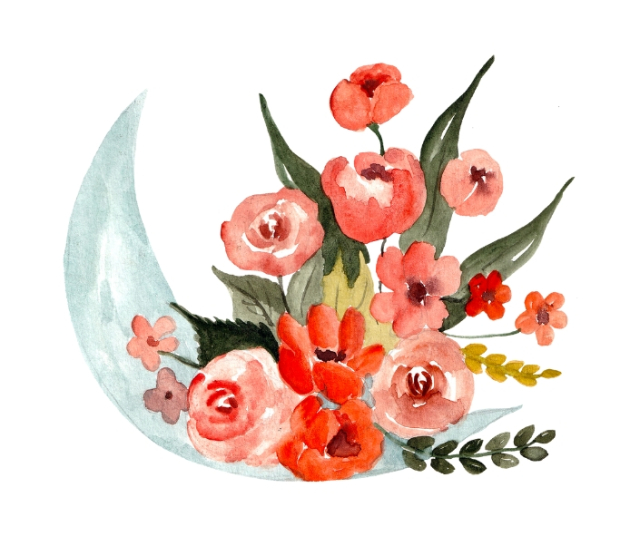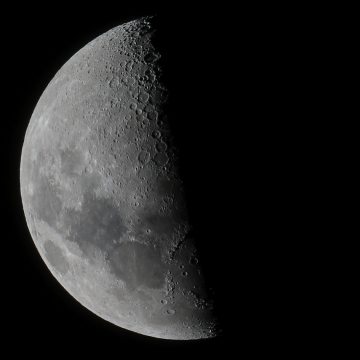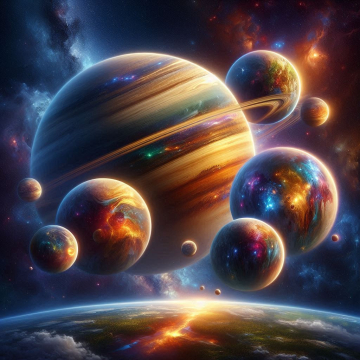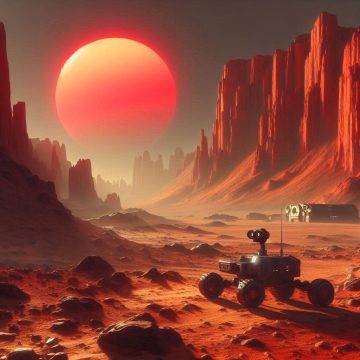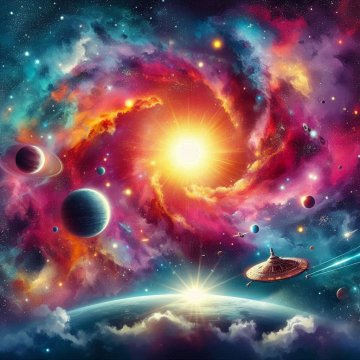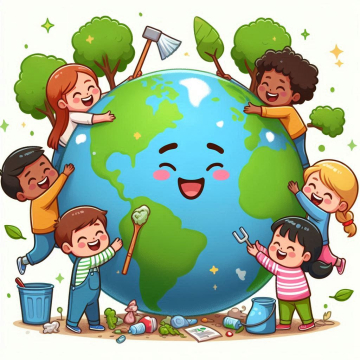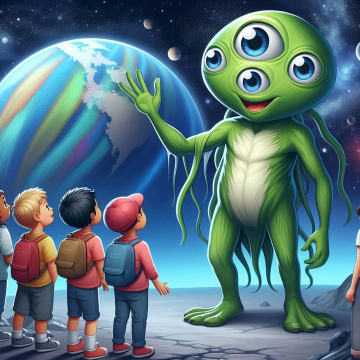Flowers and the moon, two seemingly disparate elements, have been inexhaustible sources of inspiration for humanity throughout history. Each of them has a unique and captivating beauty, but have you ever stopped to think about the deep connection that exists between these two wonders of nature?
Flowers: The Manifestation of Earthly Beauty
Flowers have been admired and revered by humans since time immemorial. Its diversity of shapes, colors and fragrances has fascinated people of all cultures and times. Flowers are not only beautiful to look at, but they also stimulate other senses, such as smell and touch, making them a gift from nature to our senses.
Flowers in Culture and History
The relationship between flowers and humanity is deep and multifaceted. Flowers have played a central role in the culture and history of many civilizations. For example, in ancient Greece, flowers were associated with the gods and used in religious ceremonies. The Romans, for their part, used them at festivals and as status symbols. In imperial China, flowers were a recurring theme in painting and poetry.
In the European Middle Ages, flowers played an important role in non-verbal communication. The language of flowers, known as "floriography", allowed people to express feelings and emotions through the types of flowers they gave. For example, a red rose symbolized passionate love, while a white lily represented purity and virtue.
Flowers in Painting and Literature
Flowers have also been a constant source of inspiration for artists throughout history. Painters like Vincent van Gogh immortalized the beauty of flowers in their masterpieces, such as "The Sunflowers." These artistic renderings not only capture the physical appearance of the flowers, but also convey emotions and moods through color choice and composition.
In literature, flowers have been the subject of poetry and metaphor for centuries. Poets such as William Wordsworth, Emily Dickinson and Pablo Neruda have used flowers to express a wide range of feelings, from joy to melancholy. Flowers are often associated with the fragility of life and the fleeting beauty of youth.
The Moon: The Eternal Companion of the Night
The moon, in contrast to terrestrial flowers, is a celestial object that has fascinated humanity since prehistoric times. Its silvery glow in the night sky has been a source of wonder and mystery for millennia. The moon, our closest natural satellite, has played a prominent role in mythology, astronomy, and popular culture.
The Moon in Mythology and Religion
The moon has held a special place in the mythology and religion of many cultures. In Greek mythology, Selene was the goddess of the moon, while in Roman mythology, she was known as Luna. These deities personified the beauty and mystery of the moon, and were believed to drive their chariot across the night sky.
In other cultures, such as Egyptian and Mesopotamian, the moon also had significant importance in religion and cosmology. Lunar cycles correlated with agricultural events and religious festivals.
The Moon in Astronomy and Science
The moon has been the subject of scientific observation and study for centuries. Astronomers have mapped its surface, studied its composition, and determined its phases and movements with precision. The moon played a crucial role in the development of Isaac Newton's theory of gravity and modern space exploration.
The arrival of humans to the moon in 1969, with NASA's Apollo 11 mission, was a historical milestone that changed our understanding of the solar system and our perspective of the universe. Subsequent missions to the moon continued to expand our knowledge about our natural satellite and its geological history.
The Connection between Flowers and the Moon
Now that we have explored the beauty and meaning of flowers and the moon separately, it is time to delve into the fascinating connection between these two natural elements. Despite their differences in terms of location and physical characteristics, flowers and the moon share a magical connection that has been appreciated by poets, artists, and nature lovers throughout history.
The Moon as Inspiration for Night Flowers
Flowers, like humans, are influenced by the cycles of the moon. Some flowers, known as "night flowers", display their fragrance and beauty in the darkness of the night. These flowers, such as jasmine, night lily, and night cactus, often release their strongest scents during full moon nights.
The influence of the moon on these flowers has been the subject of study in botany and ecology. Moonlight is thought to act as a cue for these nocturnal flowers to open and release their fragrances, attracting nocturnal pollinators such as moths and bats. This symbiosis between flowers and the moon is a stunning example of how nature adapts and synchronizes with its environment.
Lunar Flowers: The Inspiration of the Starry Night
Vincent van Gogh's famous painting, "The Starry Night," is a prime example of how flowers and the moon can merge into a stunning work of art. In this painting, van Gogh depicts a night landscape with a spiraling cypress tree that resembles the shape of the crescent moon. In the foreground, a village is surrounded by wheat fields full of flowers. The combination of the moon, stars and flowers creates a magical and evocative scene.
Van Gogh was not the only artist influenced by this connection between flowers and the moon. Many other painters and photographers have explored this relationship in their works, capturing the beauty of flowers illuminated by moonlight.
The Moon as a Symbol of Love and Romance
The moon has also been a powerful symbol of love and romance in poetry and literature. The romantic image of a couple contemplating the full moon on a starry night is a recurring motif in poetry and popular culture. Flowers, as a gift of love, are often associated with the moon and its soft, romantic light.
In many cultures, the act of giving flowers during a date or special occasion is considered a romantic and meaningful gesture. Flowers, with their fragrance and ephemeral beauty, can symbolize love and passion that, like the moon in the night sky, shine brightly at any given moment.
The relationship between flowers and the moon is not limited to poetry and art; It has also left a mark on popular culture around the world. From songs to movies, these natural elements have inspired a wide range of cultural expressions.
Songs and Music
Music has been a powerful medium to explore the connection between flowers and the moon. Songs like Frank Sinatra's "Fly Me to the Moon" and Creedence Clearwater Revival's "Bad Moon Rising" use the moon as a metaphor for love and adventure. Additionally, numerous songs have referenced specific flowers, such as Alex Syntek's "Tulip" or Tom Petty's "Wildflowers."
Music, like poetry, uses these natural images to convey emotions and tell stories. The combination of flowers and the moon in lyrics and melodies has led to some of the most memorable songs of all time.
Movies and Literature
Film and literature have also explored the relationship between flowers and the moon in various ways. Films like Woody Allen's "Midnight in Paris" and Norman Jewison's "Moonstruck" use the moon as a backdrop for stories of love and personal transformation. In literature, novels such as Charles Baudelaire's "The Flowers of Evil" and Émile Zola's "The Flowers of Evil" explore the duality of beauty and decay, using flowers and the moon as recurring symbols.
Celebrations and Festivals
In many cultures, flowers and the moon are the center of celebrations and festivals. The Moon Festival in China, also known as the Mid-Autumn Festival, is a holiday that celebrates the full moon and the harvest. During this festival, families gather to watch the moon, enjoy delicious mooncakes, and give flowers and fruits as offerings.
In Japan, Hanami is the tradition of observing and celebrating the cherry blossoms in spring. During this season, parks are filled with people enjoying picnics under the cherry blossoms and celebrating the flowers' ephemeral beauty. The moon also has its own festival in Japan, known as Tsukimi, where people make offerings to the full moon.
Flowers and the Moon in Modern Science
Although we have explored the relationship between flowers and the moon from a cultural and artistic perspective, these two natural wonders also play an important role in modern science and scientific research.
The Moon in Modern Astronomy
The moon continues to be an object of study in modern astronomy. Space missions, such as those by NASA and the European Space Agency, have provided detailed data on the geology, composition and history of the moon. Scientists use this data to better understand the formation and evolution of our solar system. Additionally, the moon remains a point of interest in space exploration. Missions have been proposed to return to the moon, establish a lunar base and use it as a springboard for future missions to Mars and beyond. The moon is also the subject of research in the search for water and resources that could be useful for future manned space missions.
Flowers in the Science of Botany
In the field of botany, the relationship between flowers and the moon continues to be a topic of research. Although some flowers have been shown to open and close their petals in response to moonlight, studies are still being done to fully understand the mechanisms behind this phenomenon. The connection between night flowers and the moon is a reminder of the complexity and interconnectedness of nature.
The next time you gaze out at a field of flowers under the moonlight or look up at the night sky, remember the deep connection between these two wonders of nature. Flowers and the moon, separated by thousands of miles, share an intertwined story that reminds us of the beauty and mystery of the world around us.
